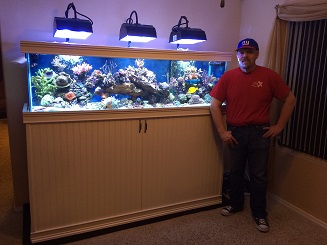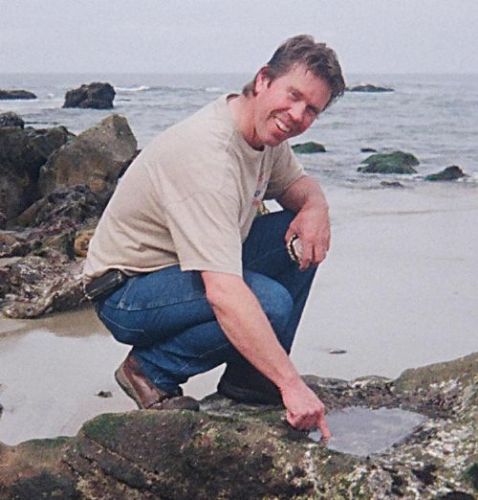| Author |
 Topic Search Topic Search  Topic Options Topic Options
|
jsol12 
Guest

Joined: July 22 2015
Location: SLC
Status: Offline
Points: 119
|
 Post Options Post Options
 Thanks(0) Thanks(0)
 Quote Quote  Reply Reply
 Topic: What exactly defines "stable"? Topic: What exactly defines "stable"?
Posted: August 08 2015 at 11:14am |
|
So in all the reading I have done, especially in regards to corals and SPS, everything basically does better with "stable" parameters. What exactly does that mean? For example, what is a "swing" in temperature? 2 degrees? 5? 10? I don't have a chiller at this point, so I have been using a little fan, which makes it hard to keep it an exact temperature. Then for the chemical parameters like alk, Ca, etc., how large of fluctuations are we talking that cause problems?
|
|
150gal/25gal sump Red Sea Max S650, started 3/28/15
|
 |
BobC63 
Admin Group


Joined: January 17 2007
Location: Lehi, UT
Status: Offline
Points: 8964
|
 Post Options Post Options
 Thanks(0) Thanks(0)
 Quote Quote  Reply Reply
 Posted: August 08 2015 at 11:57am Posted: August 08 2015 at 11:57am |
|
You have to keep in mind that our marine fish and corals come from parts of the world where living conditions are extremely constant; water temperature, for example, doesn't vary more then a few tenths of a degree daily. Same for things like pH, alkalinity, calcium content, etc.
So by "stable", we are referring to conditions that do not vary more than as follows:
Temperature = more than 2° in a 24 hour period. Lower range of about 74°; high-end of about 81°.
PH = no more then 0.3 daily. Acceptable range is 8.0 - 8.3.
Alk = no more than 0.5 dKH daily. Acceptable range is from 7.5–12.0; within this range, narrower targets depending on what type of fish and corals you're keeping.
Ca = No more than 20 ppm daily. Optimal range is from 400–500 ppm.
Mg = no more than 20 ppm daily. Optimal range is from 1350 - 1400 ppm.
Ammonia and nitrite readings ( in a mature tank ) should always be zero, and not fluctuate at all.
Nitrate ideally should be at zero – but, readings under 20 ppm for reef tank are usually acceptable. Again there should be little to no fluctuation.
Salinity should be set between 1.022–1.026, and should not fluctuate more than 0.0005 Daily.
|
|
- My Current Tank: 65g Starfire (sitting empty for 2+ years) -
* Marine & Reef tanks since 1977 *
|
 |
Mark Peterson 
Paid Member


Joined: June 19 2002
Location: Murray
Status: Offline
Points: 21436
|
 Post Options Post Options
 Thanks(0) Thanks(0)
 Quote Quote  Reply Reply
 Posted: August 08 2015 at 5:16pm Posted: August 08 2015 at 5:16pm |
I follow a slightly different concept of "stability". There are many parameters and processes going on in our reef aquariums. I have seen things do just fine when individual parameters swing more than Bob mentioned so long as all other parameters are fairly constant. I have moved Ca up by more than 100 ppm in a day with no bad effects. As a recent example, the Alkalinity doser in my Coral Farm got turned on constant so the Alk went up gradually from 8 to 14 dKH in ~24 hours. Nothing died. Now that the Alk has gone back down through natural consumption over the last week or so, everything is still doing well.
A tank set up method that both Bob and I support is to use as much live stuff as possible. The LR, LS, Algae and LW provide a ready amount of biofiltration which keeps things relatively stable and allows the reef aquarium to begin operation almost immediately without the typical "Cycle". Click on the link "Reefkeeping Tips" in my signature line below to read both our tutorials of effective tank setup.
In the wild, temperature swings occur often when new colder water up-wells into the reef, which can happen daily and seasonally. If you've ever been swimming/skiing in a large body of water, you may have felt those cold and warm thermoclines. Fish swim through those without batting an eye, so to to speak. Coral which cannot move, also have the ability to handle changes in water temperature, especially downswings. I have found that, other things being relatively constant, fish and coral can handle a daily temperature fluctuation of up to 10 degrees. The upper and lower limits depend on other water conditions and changes. Several conditions being out of balance can quickly cause serious problems. The lowest temperature I have seen a tank go without experiencing trouble is 65 and on the upper end it's 82.  MarksReef Coral Farm MarksReef Coral Farm (also supports many fish) does well anywhere between 72 and 79 degrees.
Regarding newly set up tanks, there are a number of conditions that are in continual flux for the first 12 months. There are even conditions or processes going on that we have no ability to test with test kits. On occasion aquarium setup comes down to an art form. This is why we always say it's best to go slow and not make too many changes at the same time and not make quick changes.
We sometimes talk about tank stability in terms of the biology of the tank, something that takes anywhere from 4 months to 12 months to reach. The growth of populations of things like Sponge, algae, bugs and worms is often seen as a confirmation of tank stability/maturity.
All this probably generates more questions than it answers. Sorry. Feel free to ask followup questions. It's a pretty steep learning curve.
Aloha, Mark 
Edited by Mark Peterson - August 08 2015 at 5:39pm
|
Reefkeeping Tips, & quick, easy setup tricks:www.utahreefs.com/forum/forum_posts.asp?TID=9244 Pay it forward - become a paid WMAS member 
|
 |
Mark Peterson 
Paid Member


Joined: June 19 2002
Location: Murray
Status: Offline
Points: 21436
|
 Post Options Post Options
 Thanks(0) Thanks(0)
 Quote Quote  Reply Reply
 Posted: August 08 2015 at 5:33pm Posted: August 08 2015 at 5:33pm |
Regarding use of a fan, here are several tips:
- Having the fan come on when the lights come on is a common method to keep the temperature more constant, especially with warm/hot lights, like MH or fluorescent. - The temperature of the room has an effect. Having the fan come on only during the hottest part of the day, by using a timer or controller can be helpful. - The angle at which the fan blows against the water effects the amount of evaporation and thus the temperature. - The speed setting likewise effects evaporative cooling. - When used in conjunction with a fan, a heater will keep water temp above a set temperature. - Lastly, don't worry about a temp swing of 10 degrees (preferably less). It will cause no problems.
Aloha, Mark 
|
Reefkeeping Tips, & quick, easy setup tricks:www.utahreefs.com/forum/forum_posts.asp?TID=9244 Pay it forward - become a paid WMAS member 
|
 |
jsol12 
Guest

Joined: July 22 2015
Location: SLC
Status: Offline
Points: 119
|
 Post Options Post Options
 Thanks(0) Thanks(0)
 Quote Quote  Reply Reply
 Posted: August 14 2015 at 4:27pm Posted: August 14 2015 at 4:27pm |
|
Thanks for the answers, all very helpful!
|
|
150gal/25gal sump Red Sea Max S650, started 3/28/15
|
 |